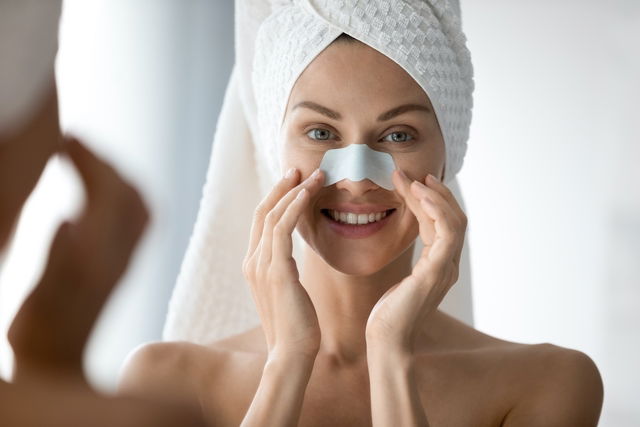You can quickly remove blackheads by exfoliating the skin, applying a clay face mask or using a nose strip. These techniques help to clean the skin by removing impurities and reducing oil, which are main factor that contribute to blackheads.
To remove blackheads and prevent the formation of new ones, it is important to cleanse the skin and apply toner. You should also apply moisturizer and oil-free sunscreen when needed. There are some dietary choices to consider, like avoiding foods that are high in fat and sugar, and giving preference to fruits and vegetables.
Despite your preferred method, any products that you decide to use should be approved by your doctor or dermatologist so that your risk of side effects is reduced. Some side effects of skincare products include peeling, inflammation and redness. In addition, a dermatologist or trained esthetician can perform a facial cleansing to remove blackheads.

Some ways to remove blackheads at home include:
1. Daily face wash
Washing you face every day is a simple but essential way to treat and prevent blackheads. You should wash your face twice a day, in the morning and at night, with running water and a facial soap or lotion. Ensure you massage the product into the skin with small, circular movements.
You should not wash your face more than twice a day, as it can dry out your skin and lead to increased oil production. More oil means more blackheads, inflammation and pimples.
2. Physical exfoliants
Physical exfoliants are recommended when daily facewashes are not sufficient in removing blackheads. These exfoliants contain small franules or micropearls, like silicone or polyethylene, which help to remove impurities and dead skin cells.
Physical exfoliants can be purchased at the pharmacy or beauty product stores. You can apply them to your nose after wetting the skin, making sure to massage the product into the skin.
You can use them once or twice per week, but they should be avoided by children or people with sensitive skin. Do not apply or use physical exfoliants around the eyes or eyelids.
3. Chemical exfoliants
Chemical exfoliants contain substances like acetylsalicylic acid, glycolic acid, lactic acid and alpha-hydroxy acids which remove dead skin cells from the most superficial layer of the skin. This helps to open up skin pores and remove blackheads. In addition, chemical exfoliants also help to prevent the emergence of new blackheads, as they help to treat excess oil and impurities that cause pore obstruction.
Your dermatologist should recommend which chemical exfoliant is appropriate for use, as it will depend on your skin type and goals. You should also use sunscreen following exfoliation, as these will often remove the outermost skin layer, making you more vulnerable to UV rays and sunburns.
4. Clay face masks
Clay masks and a great option for blackhead removal, as they penetrate the pores and gradually remove impurities and excess oil.
These masks can be purchased at pharmacies and beauty product stores. Some contain sulphur, which is a potent skin cleanser.
To use a clay face mark, you should follow the label instructions, which are generally to apply the mask for 10 to 15 minutes and then wash it off. You should use a moisturizer after a clay mask to avoid subsequent dry skin.
5. Activated charcoal face masks
Masks made from activated charcoal are an excellent option to clean and reduce the size of pores. These help to remove excess oil and skin impurities.
These masks can be purchased at pharmacies and beauty product stores, and can be used once or twice a week as advised on the product label. Generally, they are applied a thin layer on the nose skin for 5 minutes, then washed off with cold water.
